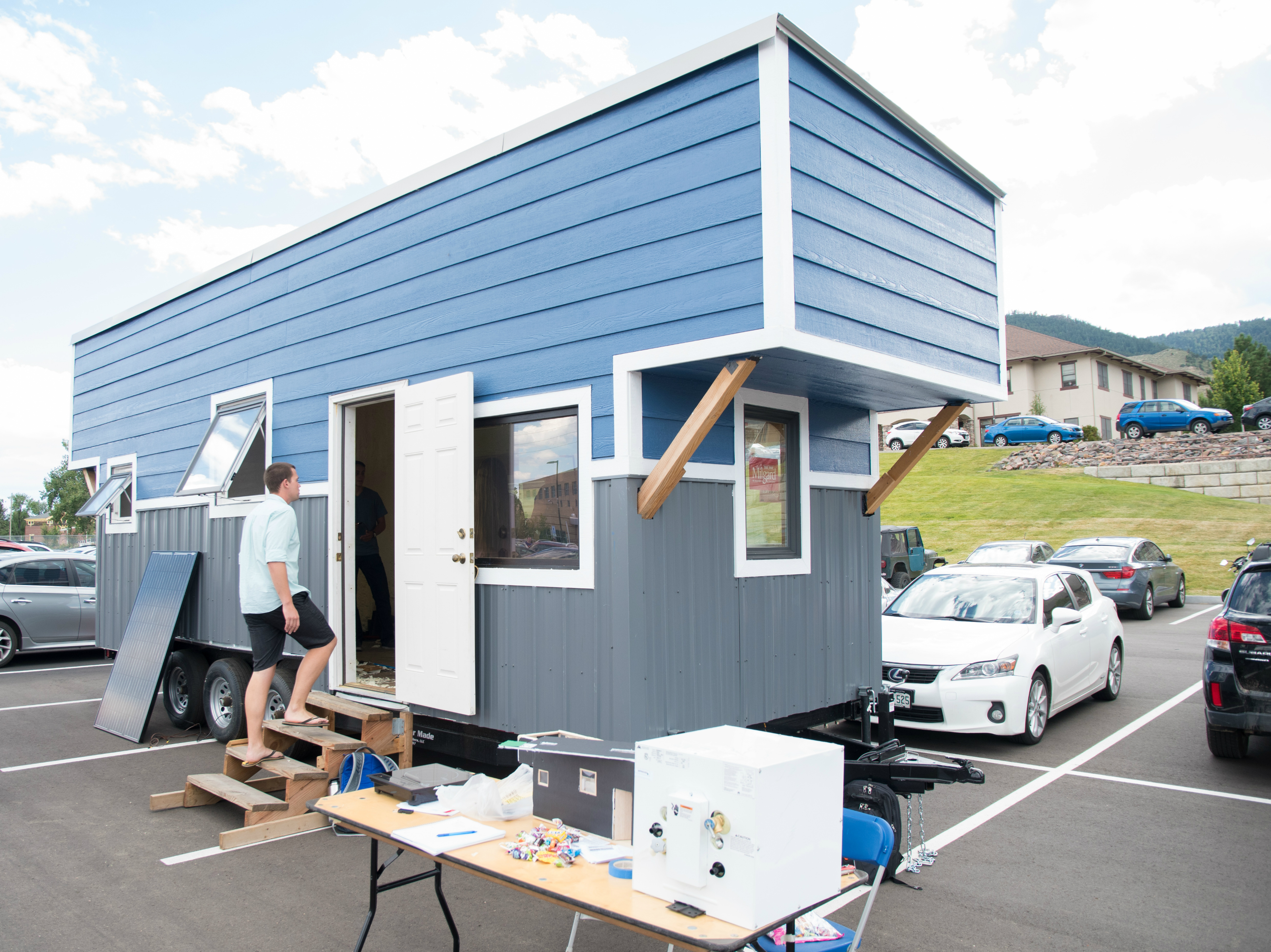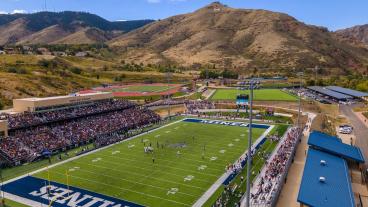
It may be tiny, but a 220-square-foot house under construction on the Colorado School of Mines campus is about to find itself in front of a big audience.
The solar-powered, net-zero Mines Tiny House will be on display at the U.S. Department of Energy’s 2017 Solar Decathlon in Denver Oct. 5-9 and 12-15 as part of the international event’s Sustainability Expo, a consumer-facing exposition showcasing energy solutions and services.
And while Mines is not entered in the decathlon’s signature competition this year, the student-led team is excited to show off what they have accomplished. At the expo, visitors can get a behind-the-scenes look at tiny house construction and the decisions that went into maximizing every square inch of space for livability and energy efficiency.
“The decathlon is going to bring out a lot of people who are interested in building science and it will be fun to show our progress and our process,” said Katie Schneider, a junior majoring in engineering physics and Mines Tiny House president.
“We want to get as much as we can done to show off our sponsors and show what we’ve gotten donated,” she said. “A lot of it, we’re just going to have in place—it’s not going to be functioning but it will be a proof of concept.”
Mines students have been working on the tiny house for almost two years, building it from the trailer up after class and on weekends. Once complete next spring, the solar-powered house will be used as a classroom and meeting space on campus as well as an educational and outreach tool in the community.
That community outreach has begun even before the house is finished. A recent event with Xcel Energy brought dozens of elementary and middle school kids to the tiny house on a Saturday morning to learn all about energy.
“We’re going to see if we can keep this tiny house completely off the grid and educate the tiny house community on how that’s possible,” Schneider said. “We really want to use it as an educational site.”
Another big goal of the tiny house: prepare Mines to compete in the next Solar Decathlon in 2020. Colorado School of Mines has never fielded a team in the international competition.
For the decathlon, collegiate teams spend almost two years designing and building full-size solar-powered houses to face off in the 10 contests, evaluating market potential, innovation, health and comfort, water usage and more. Unlike many of the other schools that compete, though, Mines does not have an architecture or construction management program.
“Working with the tiny house has given us a lot of ideas and things that work and don’t work. It’s been important for the experience of the students,” said Tim Ohno, associate professor of physics and Mines Tiny House faculty advisor.
That learning process will continue after the tiny house is complete. A sensor network is being installed to track the home’s temperature and humidity, and decisions were also made in the initial design process to allow for some flexibility moving forward, should students want to try out new materials or technology.
“The biggest deal for our house, because all the power we have is from solar panels, is during the winter we have to be pretty well insulated,” Ohno said. “There’s nine inches on the roof, five inches on the floor. There’s about five inches of insulation in the walls.”
Those solar panels—five in total—will provide about 1.3 kilowatts of electricity, Ohno said. The club’s calculations indicate that in combination with the house’s lithium battery storage, the panels will probably be enough to meet the energy demands of the house, “with the emphasis being on probably,” he said. “That’s the experiment part—we’ll find out.”
Plans also call for a “living” wall to help improve indoor air quality, an extra-low-flow shower head, a solar-powered window awning and an electrochromic “smart” window donated by ViewGlass.
Donations of both expertise and materials have come from a variety of local and national businesses, including Front Range Lumber, Johns Manville, JLM Energy, Milgard, Hunter Douglas and Xcel Energy.
“We’ve learned a lot,” Schneider said. “We’ve had to problem-solve—which is what we’re good at as engineers.”
After the decathlon, the tiny house will return to its temporary home in the parking lot of the Moly Building in Mines Park. The team is looking forward to finding a more permanent—and visible—location on the main campus once the house is done.
“It’s going to be a pretty amazing tiny house,” Ohno said. “When we finish, with respect to its energy efficiency, there aren’t going to be many tiny houses that are better.”
If you go: The Solar Decathlon, located at 61st & Pena Station near Denver International Airport, is open to the public from 11 a.m. to 7 p.m. Oct. 5-8, 1 to 7 p.m. Oct. 9 and 11 a.m. to 7 p.m. Oct. 12-15. For more information, go to solardecathlon.gov.
CONTACT
Emilie Rusch, Public Information Specialist, Communications and Marketing | 303-273-3361 | erusch@mines.edu
Mark Ramirez, Managing Editor, Communications and Marketing | 303-273-3088 | ramirez@mines.edu



